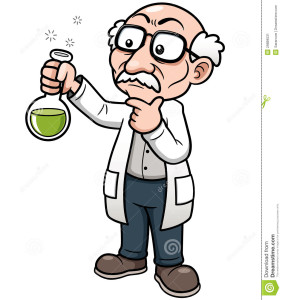The act of creation is what drives a scientist. A simple thought, an idea snatched from the mental ether and forced into reality is how the light bulb, telephone, and automobile were introduced into our world. The ingenuity of these intrepid adventurers shape the face of our society, but what happens to their duds? We are very aware of the great successes that have propelled our society forward, but how many strange inventions were meant to be forgotten by the ever-thundering march of time?
Phone of The Dead: A brainchild of Thomas Edison and certainly one of his strangest offerings to date. A mind from which brilliant ideas were brought into this world, Edison’s “Spirit Phone” is rarely numbered among them. This early invention predates the Graham Bell’s telephone, though it’s intended audience surely would have been late.
The Rat Pack: Oddly enough, a study was held regarding rats and their preference of music. In 2011, a study conducted at Albany Medical College to see which types of tunes the tiny rodents would prefer to listen too. Oddly enough, when given the option, rats prefer no music to anything. If forced to listen to music, rats prefer Beethoven. The study takes a strange turn, though, when the rats are given cocaine. Apparently their musical tastes shift to Jazz and Miles Davis when given the drug, but only while under the influence.
Hanging Around: Nicolae Minovici is one of the chosen few scientists willing to put themselves at risk for science. The first to volunteer for his own experiment, Nicolae, the preeminent forensic scientist of the time, wanted to learn more about a particular process of capital punishment. Fascinated by hanging, Nicolae built a system of pulleys to test various knots, rope elasticity, and neck strength. Curiously enough, Nicolae died several years later due to neck-related trauma.
Beautiful and strange, if science has taught us anything, it’s that you can only expect the unexpected. Who knows what mad geniuses are cooking up right now in labs around the world. Powerful computers strong enough to be worn like sunglasses and hoverboards make up our reality, where just thirty years prior it was fiction.
enough to be worn like sunglasses and hoverboards make up our reality, where just thirty years prior it was fiction.
 The update to our medical codes comes as a result of recent changes to the U.S. healthcare system. Though the patient should be left largely unaffected; hospitals, insurance companies, and nursing homes have all needed to modernize their coding procedures to evolve with the system. In order to get paid, medical providers must present an accurate depiction of what the patient experienced. Because of this change, 14,000 medical codes ballooned to an unprecedented 68,000.
The update to our medical codes comes as a result of recent changes to the U.S. healthcare system. Though the patient should be left largely unaffected; hospitals, insurance companies, and nursing homes have all needed to modernize their coding procedures to evolve with the system. In order to get paid, medical providers must present an accurate depiction of what the patient experienced. Because of this change, 14,000 medical codes ballooned to an unprecedented 68,000. However, citizen science is not without its difficulties. The process of scientific discovery is free from bias, belief or manipulation. If you expand the realm of contributors to one piece of data, you naturally increase the opportunity for “incorrect” observations to be made. The managing of citizen science has become a science unto itself. A necessary process when thousands of perspectives are colliding. Can so many varying opinions, viewpoints, and perspectives remove the bias in research by making one scientist into many, or can too much data dilute the information?
However, citizen science is not without its difficulties. The process of scientific discovery is free from bias, belief or manipulation. If you expand the realm of contributors to one piece of data, you naturally increase the opportunity for “incorrect” observations to be made. The managing of citizen science has become a science unto itself. A necessary process when thousands of perspectives are colliding. Can so many varying opinions, viewpoints, and perspectives remove the bias in research by making one scientist into many, or can too much data dilute the information?